Preface 2
Progressive Thinkers as of 12/1/2022
|
| ||||||||||||||||||||||||||||||||||||||||||||||||||||||||||||||||||||||||||||||||||||||||||||||||||||||||||||||||||||||||||||||||||||||||||||||||||||||
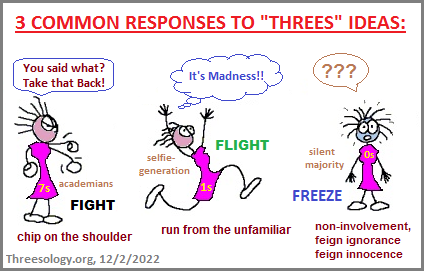
In reviewing the foregoing image one person may say there isn't three but four options sometimes referred to as the:
- Four F's of Evolution: fighting, fleeing, feeding and fornicating (that one might colloquially refer to in the manner of: F.ornicating U.nder the C.rown of the K.ing).
- Another Four F's version is: fight, flee, freeze, fawn.
- However, another may instead refer to five options: fight, flight, freeze, fawn, flop.
Yet... to use a definition like "scared stiff" for the option of flight seems a bit confusing when it fits best with the option of freeze. In any event, while there are those who will knee-jerkedly respond to the presence of three options with a recital of 4 or 5, none of them combine all three and acknowledge that what we have is another type of three-patterned ensemble— and nor do they further see this as a numerical reference similar to the Pythagorean theorem as a sort of sometimes recurring cognitive recital: (32 + 42 = 52). Humans are frequently so involved in one-upmanship exercises they fail to step back and acknowledge the totality of the situation colloquially referred to (with a 3-patterned phrase) as "The Big Picture".
(Let me note that what we see as 3, 4, or 5 alternative types of responses; initially started out as a two-patterned "fight-or-flight" response, which was first described (as a singular entity) in the early 1900s by American neurologist and physiologist Walter Bradford Cannon. Source: "fight-or-flight response." Encyclopædia Britannica. Notice there is no "s" designated plurality being used for the word "response".)
In presenting a topic such as a study of "threes", whether related to Language, History, Literature, Mathematics, Physics, Biology, Philosophy, etc..., I frequently encounter one (or more) of three different responses. (By the way, no one has flopped nor wanted to have sex with me. HA!) You can not imagine how many "professional" people act defensively (albeit respectfully) to the extent they very shortly respond with some alternative numerical pattern that they view is equal to or greater than patterns-of-three. Yet, if I ask them to continue providing with the small assortment of examples being provided; even though I welcome them and assert I will give them full credit for their list that I would like to place on a web page, they abruptly stop and simply resort to some explanation of there being "a lot of," "a bunch of," or "numerous" examples, but they don't have the time to provide me with more. Which is of course understandable because most people do not engage in creating a list of enumerated patterns for themselves except for a short memorized one developed during sporadic encounters... perhaps by someone who did write down a longer list of examples for a given number.
Since most of us are average, everyday, run-of-the-mill people but a convoluted ego gets in the way and refuses to accept the view that such people are capable of doing marvelous things; they should not be expected to create a list of enumerated ideas when social requirements for survival request... that is demand... a person spend their time on activities more suitable for a career or that which assists them in their day -to- day survivability. An interest in numbers as a philosophical pursuit (be it for professional or personal use) is the pasture in which a Mathematician or Numerologist may typically graze in from time to time as a cognitive exercise exploring what may be described as an old artefact uncovered in the tomes of ancient mysticism and would-be pursuits of ancient ideological orientations with over-zealous ambitions involving some version of a Grand Unified Model (GUT: grand unified theory), or TOE: theory of Everything... though I am still waiting for someone to come up with some other 3-lettered body part theory such as EAR, EYE or 'BUT'... (a THREE-to-1 ratio). Nonetheless, the response of professionals to my introduction of a "threes" research effort is so routine (as are the alternative responses of others), I found it useful to appropriate an image frequently used in the sector of cognition called psychology: that describes three different responses which appear to reflect the common psychology not only of humans, but multiple life forms. I came across the image 3 years ago during a random search of behavioral responses to threatening situations (real or imagined), and adapted it to the present 3's model. I do not know who initially created it, but I give them what credit I can by this mention of it being another's art work and not my own.
Language, particularly in the study of computer languages, one may come across an instructor turning to Charles Sanders Peirce (1839 - 1914), because his philosophy attempts to address a presumed system of logic by way of generalized specificities, typically in a 3-patterned format. And a desirable logic for computer languages is sought for by computer scientists who are not well -versed in the idea of dichotomies and triplicities in terms of cognitive activity and cognitive development. It is particularly funny that Computer scientists with a binary language are looking for a practicality of thinking they can apply to the development by way of a triplicity, though the standard "one-upmanship" behavior comes into play aided by some model of mathematics which professes the existence of a condition exceeding the "3" and is therefore automatically superior, though they lack the practical means of application to computer languages constrained by the underlying dichotomization of computer languages due to the on/off reality of the electrical circuit. Whereas the basic Boolean Algebra triplicity of And- Or- Not has been successful, many computer scientists are looking for something which will take computer language into some desired but as yet unrealized next stage of developmental expression. Because Computer Scientists are attempting to develop what they believe to be practical languages which are not constrained from advancing, they are often pushed or influenced to go into the direction of the philosophy titled Pragmatism... which Charles S. Peirce is noted for:
When Pragmatism became a popular movement in the early 1900s, Peirce was dissatisfied both with all of the forms of Pragmatism then current and with his own original exposition of it, and his last productive years were devoted in large part to its radical revision and systematic completion and to the proof of the principle of what he by then had come to call "pragmatism."
His "one contribution to philosophy," he thought, was his "new list of categories" analogous to Kant's a priori forms of the understanding, which he reduced from 12 to 3: Quality, Relation, and Representation. In later writings he sometimes called them Quality, Reaction, and Mediation; and finally, Firstness, Secondness, and Thirdness. At first he called them concepts; later, irreducible elements of concepts—the univalent, bivalent, and trivalent elements. They appear in that order, for example, in his division of the modalities into possibility, actuality, and necessity; in his division of signs into icons, indexes, and symbols; in the division of symbols into terms, propositions, and arguments; and in his division of arguments into abductions, inductions, and deductions. The primary function of the new list was to give systematic support to this last division. ("Peirce, Charles Sanders." Encyclopædia Britannica.)
In effect, Computer Scientists like so many others in the respective area of interest, are seeking a greater expression of truth, but there is a serious problem that A Language Narrative may at some time address.
Peirce, it is said, thought truth can be imagined as an ideal limit:
...The opinion which is fated to be ultimately agreed to by all who investigate, is what we mean by the truth, and the object represented in this opinion is the real.
In effect, Peirce's view places primary importance on scientific curiosity, experimentation, and theorizing and identifies truth as the imagined ideal limit of their ongoing progress. ("truth." Encyclopædia Britannica.)
This idea of "truth" being sought after like some holy grail, golden chalice or golden fleece is part of the cognitive orientation developed by cultures the world over filling the heads of children with ideas and ideals which they "adultize" (transform into respective representations and language more fitting by a presumed intelligent maturity of thinking). The so-called "truth" is more in-line with the concept of "Many" in the primitive's development of a basic model of enumeration which can be generalized as "1- 2- Many". With the "many" be substituted in different forms and formulas such as the words "truth," "eternity," "heaven," "infinity," etc., which is comparable to the primitive's usage of a language equivalent "many, much, heap, pile, bunch, all," etc... They are all expressing some supposed field goal, some home run, some 1st place prize amongst three options being recognized... metaphorically viewed as a queue of arduous tasks to be performed such as the slaying of a dragon and marrying the King's daughter to live happily ever after— or in the case of the female psyche, being rescued by one's Prince Charming by letting down one's hair, or after eating a poison apple; or by chance... discovering the name of Rumpelstiltskin. All of which are a lineage of ideas having been transformed into variations of the scientific, creative, and mathematical processes.
We as a species are not looking close enough at cognitive development as it is being presented to us in every single subject humanity is involved with. And every single one of them can be reduced to enumeration and that enumeration will exhibit what I call a "Conservation of Number" as a survival mechanism that I will get into at a latter time.
It is really interesting how an assessment of ALL the sciences can be grouped into 3 Main Branches of Science (physical sciences, earth sciences, life sciences); which necessarily excludes most other research endeavours (such as Language/Linguistics, Sociology, Art, Music, Mathematics, etc.), because... one might assume, such explorations where so many are involved, are little more than bubbles of on a pond called Philosophy (or worse, Religion), which... one might again presume, can not itself be designated a Science because there are no axiomatic controls to determine veracity; even if one adds the word "science" to its name such as "Political Science," "Social Science," "Religious Science," "Sports Science," "Culinary Science," "Lexicographical Science," "Birthday Party Science," etc., much less attach the suffix of "ology" to a word in an effort to provide some distinction and prestige that might ensure the ratification of an idea as truly being important and not some variation of myth, legend, fairy tale or caricatured fiction of science. And even though one or another Mathematician may have pronounced Mathematics as the "Queen of (the) Sciences", it too must be dis-included as a bona fide science because Mathematics holds a biased view about itself, thereby annulling any would-be objectivity, even though all the sciences necessarily still use it as a tool (and thus use their collective usage as a proofing standard).
Despite all its axioms and proofing mechanisms, the fact that Mathematics has a predilection to be viewed from a dichotomous set of lenses, it can't be trusted beyond its present ideological constraint of mimicking the persistence of dichotomies similarly seen in psychology, albeit with different labels. In other words, we have the presence of a fallacy, an hypocrisy, and a justification for developing a cognitive appraisal of all sciences using enumeration to express fundamental cognitive themes being used by scientists all over the world as a means to develop some idea of what reality is, and how society must best make use of and reflect such orientations; yet never once notice nor voice the presence for the recurrence of patterns-of-three (as part of a relatively few) as a tell-tale sign of an underlying cognitive conservation taking place related to the reality thought to exist because a collection of sciences says so and we have not developed a means of testing this cognitive collectivity because each science sees itself as golden jeweled cuff link where the only missing links to be found in science are those to be proposed by the present amalgamation of sciences.
As a preface to the preface to the 1st page, let me say the present Language Narrative series will be an exercise in making multiple correlations where the "3" is being used as a tool of investigation and analysis. For example, the following 3-patterned (John 1:1) biblical expression can be removed from the clenched fist of those harboring the stained glass window vision designed in the Middle Ages, and place it into a language or linguistics' context to provide it as a description not only of the historical inception of words to be distinguished from other vocal sounds, but how such vocalizations were interpreted and treated.
and the Word was with god
and the word was a god
For those of you seeing what I am saying, let it be rewritten as:
and the Language was something unique
and the Language was very powerful
Or one might write it as:
and the Vocal Behavior was something unique
and the Vocal Behavior was very powerful
Like many a speaker or singer today whose vocalizations (seemingly from their throat) attract and seem to physically grasp another (by their throat) to get their attention; imagine the incredible social impact of an emerged situation (and emerged social situation) not only where "words" were previously (for the most part) an unfamiliar vocalization which had a transformative effect on a given (mostly non-word uttering?) public not used to someone with such a voice— coupled with a charisma not experienced before; (as is the case sometimes attributed to the impact Hitler had on the German Peoples. In fact, Hitler, in his circumstances, might well be viewed as a type of demigod). Even today, for some, the name "Hitler" speaks of a god-like figure whose favourite cross was the Swastika. And of importance for the present Threesology Journal is that we are referencing the "Third" Reich. Similarly, we could cite the three Estates preceding up to the French Revolution as a type of (metaphorically translated) collective social voice consisting of nobility, clergy, and rest of the General public.
No less, one might speak of the "Third Rome" which is an old reference to Moscow, Russia as a vocally trumpeted historical gesture: In 1510 the monk Philotheus of Pskov addressed Vasily III as "tsar" (emperor), saying: "Two Romes have fallen, but the third stands, and a fourth there will not be." The meaning of the sentence was that the first Rome was heretical, the second—Byzantium—was under Turkish control, and the third was Moscow. ("Eastern Orthodoxy." Encyclopædia Britannica.)
Typically, the charismatic leader can demand and receive complete devotion from his or her followers. The foundation of charismatic authority is emotional, not rational: it rests on trust and faith, both of which can be blind and uncritical. Unrestrained by custom, rules, or precedent, the charismatic leader can demand and receive unlimited power. ("charisma." Encyclopædia Britannica.)
His (Hitler's) most amazing achievement was his uniting the great mass of the German (and Austrian) people behind him. Throughout his career his popularity was larger and deeper than the popularity of the National Socialist Party. A great majority of Germans believed in him until the very end. In this respect he stands out among almost all of the dictators of the 19th and 20th centuries, which is especially impressive when we consider that the Germans were among the best-educated peoples in the 20th century. There is no question that the overwhelming majority of the German people supported Hitler, though often only passively. Their trust in him was greater than their trust in the Nazi hierarchy. Of course, what contributed to this support were the economic and social successes, for which he fully took credit, during his early leadership: the virtual disappearance of unemployment, the rising prosperity of the masses, the new social institutions, and the increase of German prestige in the 1930s—achievements unparalleled in the histories of other modern totalitarian dictatorships. In spite of the spiritual and intellectual progenitors of some of his ideas there is no German national leader to whom he may be compared. In sum, he had no forerunners—another difference between him and other dictators.
By 1938 Hitler had made Germany the most powerful and feared country in Europe (and perhaps in the world). He achieved all of this without war (and there are now some historians who state that had he died in 1938 before the mass executions began, he would have gone down in history as the greatest statesman in the history of the German people). In fact, he came very close to winning the war in 1940; but the resistance of Britain (personified by Winston Churchill) thwarted him. Nevertheless, it took the overwhelming, and in many ways unusual, Anglo-American coalition with the Soviet Union to defeat the Third Reich; and there are reasons to believe that neither side would have been able to conquer him alone... ("Hitler, Adolf." Encyclopædia Britannica.)
It is language that has created both good and villainous characters in history and literature. It is language which has been the means and manner by which the creation of visually tantalizing images promoted by generations of linguistically-traded stories (not unlike goods, currency and slaves) portray humans (such as demigods) or creatures (both fearsome and magical) in what we describe as myths, legends and Fairy tales. One does not need to go into too great a detail to express the circumstance in which the voice (usually with words) can have on a person as well as a crowd.
Yep, my use of the "threes" idea as a tool of investigation, dissection and explanation is unconventional. For example, if and when you come across someone speaking of language or cognition (yes, the two are related along with anatomy, physiology, biology, etc...), what you may discover is that there is an absence of the so-called experts making a reference to the auditory process with respect to the identification of what is a rather obvious pattern. Namely, patterns-of-three. Duh... it is not too difficult to access your own memory of noticing how difficult it is for a deaf person to articulate words. And when we observe so-called normal people (without hearing or speech problems), there is a recurring use of articulations (ideas, views, concepts, etc...), that involve some recognizable pattern-of-three in many, many, many cases... along with other patterns as well. However, because of the philosophical question of whether thoughts influence ideas and vice versa, we have got to deliberately find out whether an ear structure with a different number pattern of parts, would result in a different model of language and therefore a different model of thinking. We can do this experimentally if the influential people "out there" would provide the incentive and funding for several Engineering departments at different schools to creating an artificial mechanism of hearing with an other-than-three pattern dominant structure. And let me not get into how the results of which will have an reviewing the application on the "hearing apparatus" used in the old Thomas Young's double-slit experiment.
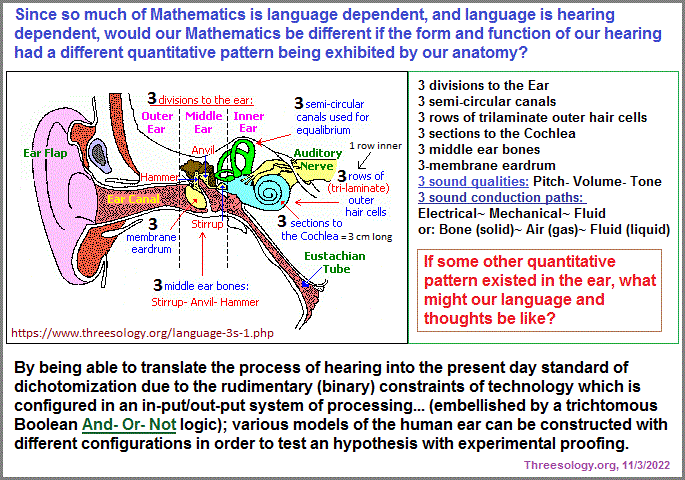
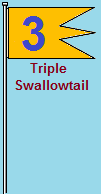
I have been contemplating... for awhile that someone should initiate The Beginnings of a very badly needed "Language Narrative". Well, I'm getting too old to wait around for someone to take up the charge, so I decide to pick up my makeshift Triple Swallowtail (butterfly) banner (net) with an emblazoned "3" and make my way into a territory whose many human-generated obstacles will no doubt require me to take a rather (singular) circuitous, (double) zig-zag or (triple) hop-skip-jump form of circumnavigation that those professing one or another authoritative erudition (about one or another aspect of language) may take offense and claim that I am engaging in a trespass, or a transgression, or some other nefarious tip-toeing about that is tantamount to some sacrilegious impudence for suggesting a view other than their own is the last word on the subject of Language.
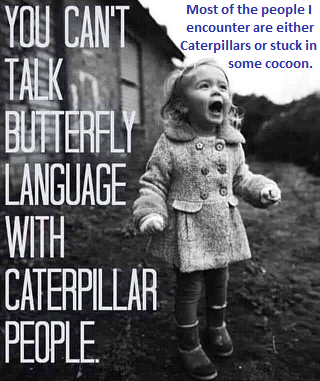
Nonetheless, as part of my rather shy and innocent humility to cover up any suggested deviously sly and witty subterfuge, I simply profess to be engaged in a pastime sport not unlike throwing a Frisbee, playing catch-a-ball with a dog, or musing upon the scenery without any special intent except perhaps give the impression I would like to make a play for some innocent game of horseshoes. However, I must surreptitiously engage in a very casual, discrete nonchalance— (not unlike the stealth of Odysseus in his efforts to prove his identity)... I take up the bow of language, shoot an arrow, and am now intentionally obliged to chase it down hither -and- thither into both uncharted territories and those often sentinelled by institutionalized hounds squabbling and gnawing on some revered faith in the purported veracity of their language theory. Alas, as is the case for many who set out on a mission to find a shorter route to truth, there are those who do not broaden the horizons of their knowledge and prefer to stay within a few kilometers of a known consciousness who may at times look at my log book and say that it gives them the impression of a crazy person chasing an unseen butterfly with an unseen net. Quixotic as it may seem, I shall forthwith keep my widely tossed net from being entangled by any would-be blow-hard windmills along my path.
Yet, woe unto those who speak ill of the Butterfly peoples jocularly known amongst themselves as the Better Fly Peoples (because it is better for them to fly away from crazy people). A thousand curses on your calumny of prejudice against the Butterfly peoples... so that your infamy will have to wrestle with itself for an eternity! Dare you speak ill if those who are the actual purveyors of truth! If such be you, then I say Be-gone! But if such a Machiavellian character is not in your being (whose "whimsical" writing about princes is now history), then I extend to you an invitation to come along for the impending sojourn if you want, and if you dare... but I expect you to develop some sensibility about Butterflies having provided humanity with its basic English letters and numbers. Yes, it's true. Such symbols did not arise out of a long lineage of would-be scratches that several cultures have laid claim to as some supposed evolution of inter-generational glyphs. No says I! The audacity of such claims by those who think the true source will not be found out. They are Thieves! They stole such letters and numbers from the Butterfly people! If you can't come to appreciate this, then I won't be able to speak the language of the butterflies with you, for you will surely need it to keep pace with the 3-patterned flitterings, flutterings and flickerings of a preeminent emergence of a dawn precipitating an effulgent revelation destined to become a Revolution breaking those bonds which presently enslave the fledgling prowess of a truly enlightened consciousness! Come! Take up the 3-insignia-ed Swallow-tale banner as thy cross, as thy sword, as thy greater truth yet to be told... and bravely step into those uncharted domains of an un-blindered pertinaciousness yet to be realized as we trek through the many fields of Language! The banner 3 is Raised! The Bugle has sounded three times! The drum beats its rhythmic 3 beats. And now... the Piper's three notes calls to all far and wide! Do not cripple thy consciousness and be left behind.
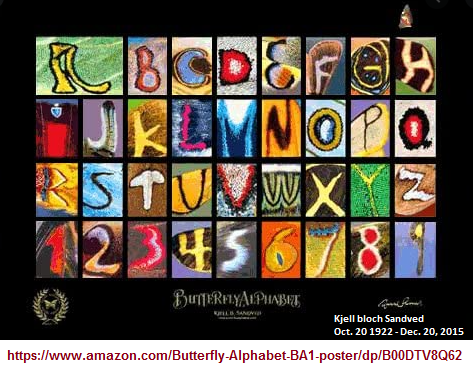
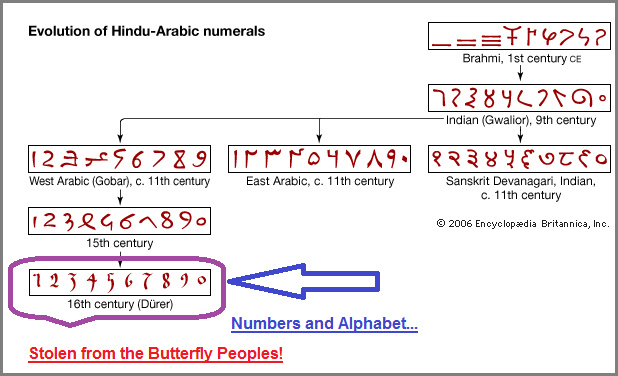
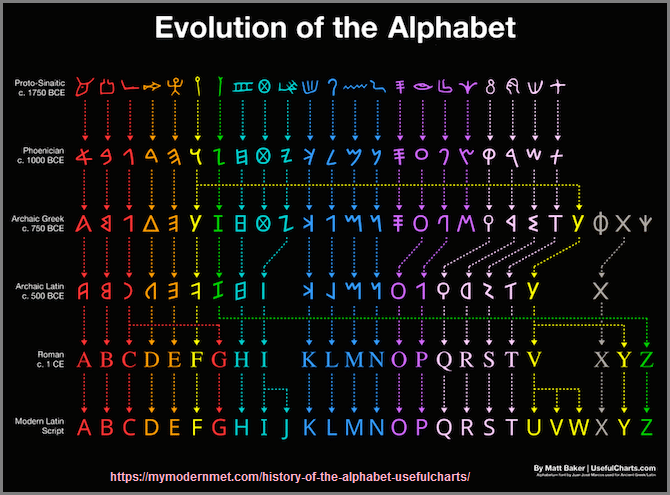
You can see for yourself that the English Language and Numbers were clearly stolen from the Butterfly Peoples. All humans did was engage in a very elaborate effort to conceal the theft by providing some plausible rationale as to humans developed such symbols, when the Butterfly peoples have been wearing such symbols as insignia and tattoos far before humans even thought to imagine how to even think.

It should be noted, for those who are wondering, the "banner of 3" has been championed by others before me. One of whom was Nikola Tesla. Others, on the other hand, perhaps fearful of being named a Numerologist or worse... viewed as an obsessive compulsive; may instead use some pattern-of-three as a major theme in their work. Nonetheless, though their banner may not be waved high over their head as might be seen in an obvious Calvary or infantry charge, the use of a "three" pronouncement is there. Let me cite For example Georges Dumezil and his "Tripartite Functionalism" of Indo-Europeans. In addition, the "Rule-of-Three" idea is used by multiple writers and speech makers. No less, the 3-colored street light is in standard used in many places of the world. And let us not be forgetful of the multi-descriptive "3s" used by particle physicists who may themselves be oblivious to the recurrence of the pattern. The use of the "3" can also be found in Nature as a standard code for the 3-lettered DNA. Nor should we forget about the "threes" in the human body: List of threes in human anatomy
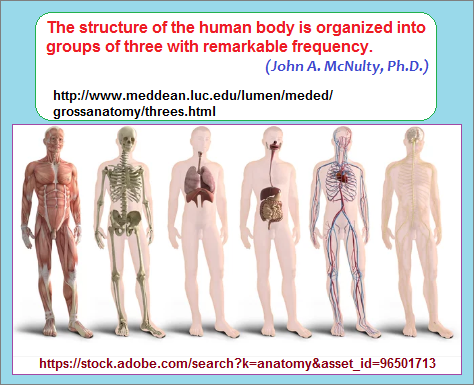
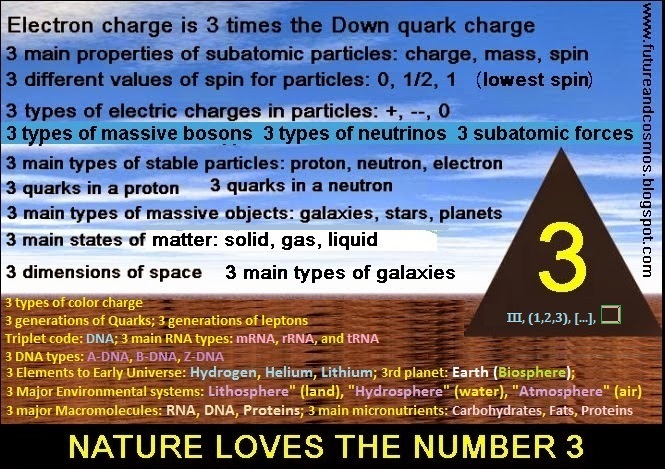
Taking a trip along the road of language and its adjoining fields would seem to be a normal and natural exercise, albeit this time engaging the use of a "threes" tool, as one might carry and use a compass, sextant, microscope, line-of-sight, telescope, magnifying glass, mathematics, intuition, gut feeling, and the multiple other utensils (intellectual, emotional and otherwise) that one carries around as a multi-functioning Swiss Army knife or butterfly model of an all-in-one grouping of tools fitted onto a fold-away compartmentalization. Hence, I will take the "3s" tool along even if you think it little more than a divining rod, bag of knuckle bones, ouija board, Tarot card deck, or newspaper clipping of Astrology symbols. Like any tool, no matter if you think it crude, antiquated, and otherwise born in an age of superstition, it can be of value in the hands of a skilled practitioner under given contexts. An old skilled mechanic with a few tools is sometimes more handy to have around then some young upstart with thousands of dollars of tools and a frame of mind focused on the foremost technology. Least you forget, language is a very old contraption... not born in an age of Scientific and Industrial Revolutions, though they have their turns in shaping it, while its core structure apparently remains... even if we have difficulty deciphering the runes being presented to us when looking at what we think is the basic form of Language. It was born in an age preceding all religions, all civilizations, and all businesses. Yet, did it precede infant babbling, or are we confronted by yet another chicken and egg situation? Humanity needs to rethink its views on Language by first getting rid of its biases of relying foremost on theories which have created the present bog of so very many entanglements. Let us look at the recurring patterns to be found in Nature, of which Language is very much a part thereof. One of these patterns is the "3", with or without any present day arithmetical quantification thereof.
All these idiots do is repeat one another who repeat what was written by some historian who repeats (in their own way) another historian who repeats (in their own way) an historian (or some reflecting journal keeper) in the past who didn't know their head from a coconut. Such experts quite often never actually use their tools of investigation and interpretation to the presence of Arithmetical recurrences, and instead transform what they think they see into some ready-made description so they don't have to spend time in an area where research has been sparse to non-existent... and because no one routinely does, this is a good enough reason to avoid the territory. The situation reminds me of an imagined scene in which the first would-be paleontologist of some early age came across an historically 'prizable' (prize worthy) bone embedded in a rock and took it back home to "study" it by using it as a door stop they can "examine" from a porch swing from time to time while they are trying to listen for the sounds of plant life growing as part of one of their many interests in Nature to be concealed from some reigning religious authority that is against anyone studying anything but a religious text. Such a sentence reflects the current state of examining number patterns related to cognitive activity that is yet to be deciphered on its own merits and not those attempting to create a break through simply by way of some back-field triple hand-off where financial gain is the prime incentive of a dominant player in the field of a particular research orientation.
Here is a thrown-together listing of reactions to the "threes" phenomena from different sectors of "professionalism":
- Psychology: Obsessive/Compulsive, illusion/delusion, nature/nurture, social/anti-social, modern/antiquated, etc...
- Psychology is heavily invested in the use of dichotomies. For example: Persistent Dichotomies
- Mathematics: Illogical constructs involving mysticism, numerology (Irrational versus Rational numbers)
- Mathematics can not accurately reference the "threes" phenomena because it is two-patterned biased. Mathematics can not be effectively used to objectively analyze itself.)
- Anthropology: Cultural numbers exist
- Numerology: Favorite numbers, Angel numbers, etc...
- Astrology: Numbers revealing one's fated disposition whether one believes or not
- Religion: Sacred numbers, look at 7 and 4 or whatever is important for your tithing donation
- Advertising: Whatever works to make a profit
- Politics: I believe if you believe and then also cast your vote for me
- Dumezilian Tripartite Functionalists: The "Three" is only important in the context we describe, all else is flawed
- Sociology: Huh? Using three social divisions means something, but more than three is better?
- Democracy, Socialism, Communism is an inevitable 3-part stepping stone?
- Journalism: Whatever sells copy, you want it, we'll give it to you or else force it down your throat
- Business: You mean it's an S.O.P? (Three letters referring to: "Standard Operating Procedure")
- Art: 3 additive/ 3 subtractive coloring; 3-dimensional, Triptych renderings, etc...
- Computer technology: And, Or, Not (Boolean over Binary); Conducts search for the holy grail called a Trinary (ternary) system
- Linguistics: Devolves triplicities into dichotomies and dichotomies into singular ideas which are ruthlessly guarded
- Philosophy: Let's instead focus on triple Monads or triple Dyads or the singularity/dichotomy of triplicities...
- Let us not focus on triplicities because that's too much like a Trinitarian/Triune religious concept. We are not a religion!
- U.S. Government: "E Pluribus Unum"... Out of the many whom we forcibly tax, we get a singularly false democracy presented as an illusion
Language Narrative Origination: Monday, 21st November 2022... approx. 4:00 AM
Date of Initial Posting (Preface): Tuesday, 28th November 2022... 8:00 AM
Updated Posting:Tuesday, 6th December 2022... 7:57 AM, AST (Arizona Standard Time); Marana, AZ.